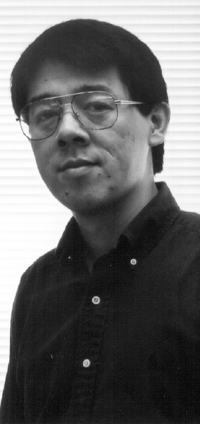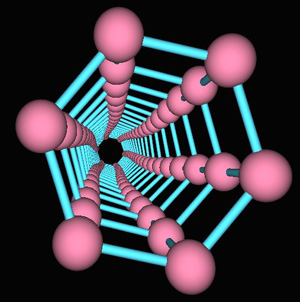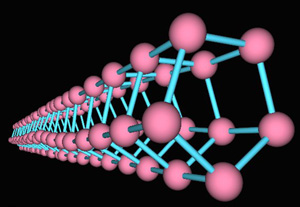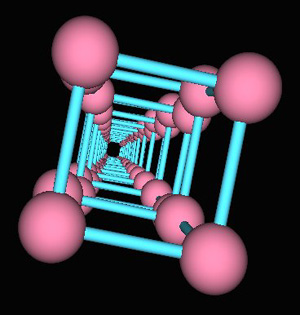Xiao Cheng Zeng, Jaeil Bai and their colleagues at the University of Nebraska-Lincoln, working with Hideki Tanaka of Okayama University, in Japan, have used the supercomputer, Prairiefire, to model single-walled silicon nanotubes in hexagonal, pentagonal, and square configurations in an effort to see just how low one might go. The computer ran for about a year doing the calculations. It would have taken six years on a desktop computer, which is somewhat longer than the usual research period for a doctoral student. The researchers discovered that the thinnest possible nanotube with a square configuration and a width of less than 0.5 nm would be structurally possible. Essentially, these materials would be one-dimensional silicon allotrope structures having length but negligible thickness.
But, there is a possible incongruity in the in silico model. When the team applied quantum mechanics to the smallest square silicon nanotube they predicted that it would be a metallic conductor. This is in stark contrast to the most useful property of bulk silicon – the fact that it is a semiconductor – and could have implications for the use of nanoscopic silicon structures in sub-microscopic electronics and other systems.

Xiao Cheng Zeng
To find that these tubes are very likely to be metals instead of semiconductors is very surprising, says Zeng, Scientists have studied silicon for more than fifty years and it’s the cornerstone material for the modern semiconductor industry.
Bai and Zeng have spent almost three years working on understanding the sub-atomic behaviour of silicon nanotubes but have only now figured out their quantum chemistry. Only quantum physics can reveal the true behaviour of electrons in a nanostructure, explains Zeng. He adds that his father, a retired quantum physicist at Peking University, Beijing, suggested that particular avenue of investigation. It is the electronic structure that determines whether a material is a metal or a semiconductor, adds Zeng, So quantum physics was critical to this.

Xiao Cheng Zeng
Zeng hopes that experimental chemists will now make the nanotubes in the laboratory and demonstrate the validity of his and Bai’s model. However, he says it is far too early to predict to what applications the nanotubes might be put. I guess it might be useful to make 1D metal-semiconductor junctions, as it is now well known that 1D silicon nanowires are wide-gap semiconductors, Zeng told Spotlight, whereas 1D silicon nanotubes are likely to be metallic. Such junctions have already been made with single-walled carbon nanotubes. We’re just very gratified to find this new nanostructure three years after we entered the field, Zeng adds.

Hexagonal arrangement

Pentagonal arrangement

Square arrangement
Further reading
Metallic single-walled silicon nanotubes
http://www.pnas.org/cgi/doi/10.1073/pnas.0308467101
Xiao Cheng Zeng
http://www.chem.unl.edu/faculty/eachfaculty/zeng.shtml
The Prairiefire computer
http://rcf.unl.edu/prairiefire/
Suggested searches
Silicon
Semiconductors